Noise Engineering is here with a would-be summer blockbuster of a Eurorack mixer. In a mix of Greek and Latin, the name means roughly “here is a lotta mixer.” And they’re not kidding. It’s got digital and analog control, MIDI and save and recall. But it’s all in 32HP. Let’s look:
This is just a preview, not a review – my Xer Mixa just arrived through German customs. Think of this as the trailer, not the full film review. But it’s hard to say just how beautifully compact 32HP feels in practice (36HP total with the expander) – enough to make me consider grabbing a small skiff for this.
And the features here of this hybrid design are formidable. It also finally makes mixing in stereo and working in a Eurorack workflow genuinely practical and fun, not a weird chore of tangled summing and muddling through stuff that was designed for mono and botched levels. (I… heard from a friend.)
Just look what’s here:
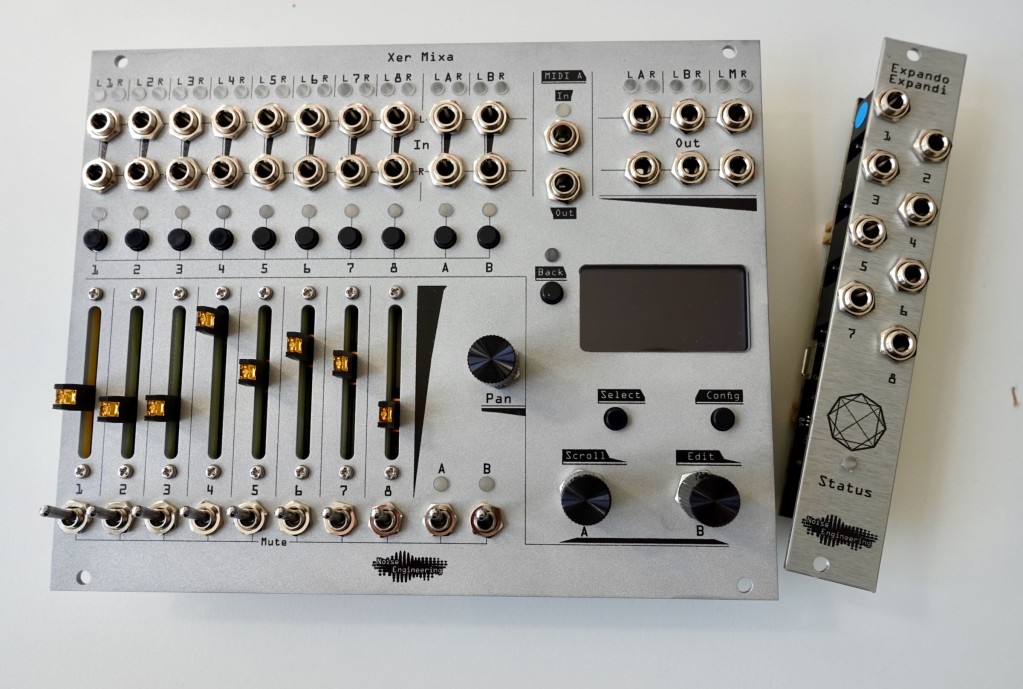
- Ten stereo-paired inputs – 8 channels and 2 aux ins.
- Sends! A + B – because of course you’re going to want to use this with your Euro FX. (pre/post options, too, etc.)
- Dedicated faders for each (with lights!)
- 100% analog signal path “with low noise and crosstalk, pristine sound quality, and ultra-high headroom.” (That I’ve got to test, of course, but Noise Engineering’s stuff has been among some of the best, even in the “dodgy neighborhood” of Eurorack signal.
- Panning.
- Clickless mutes. Essential for live, and something I praised on their smaller previous Xer.
- Built-in analog leveling amplifier. (Now, that’s interesting to test, especially for techno etc., since those sorts of characteristics have given BOSS and Mackie classics of yesteryear some of their appeal…)
- Digital control and state recall via the onboard display – per-channel pan-law settings, pre/post-fader sends, channel and MIDI CC routing.
- Seven preset slots with recall.
- MIDI I/O with CC control.
- Cue Mode. You can use out B as a cue output, and use mute as a pre-listen – ooh yes please for live performances.
- 4 HP Expando Expandi to add another 8 freely assignable CV inputs, if you want them. That’ll depend largely on your workflow and how much you “play” the mixer live, but you get level, pan, aux send, and other CV control – will detail that in the review. If you just want to set-it-and-forget it – and spare the extra 4HP – of course you can go without.
- Put the jacks at the top – or put the jacks at the bottom. Noise Engineering have been great with customization, so is this a surprise?
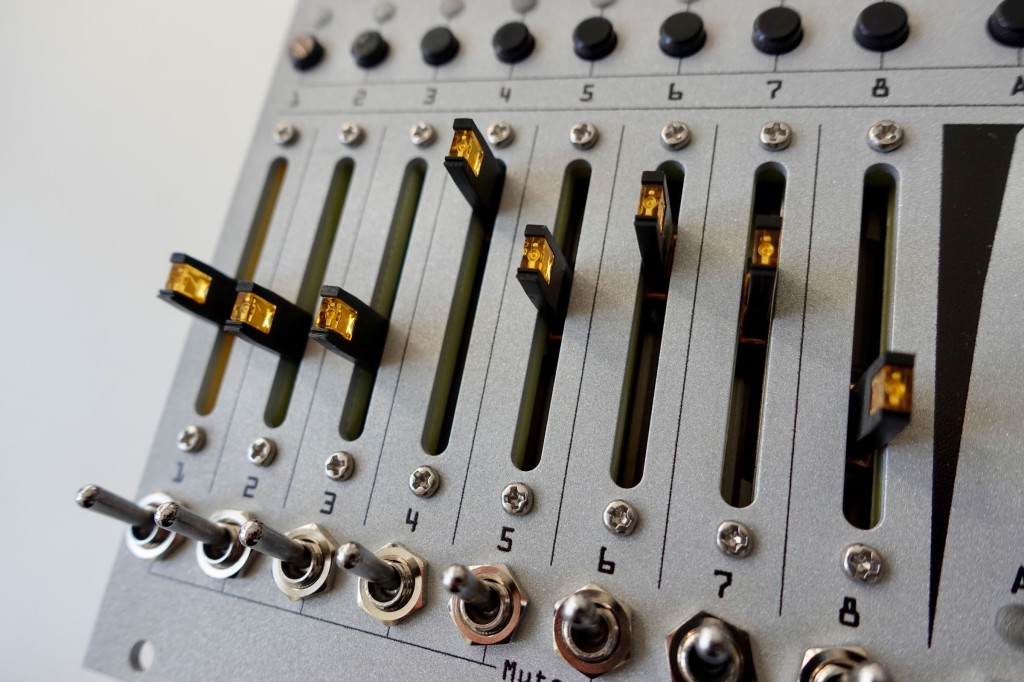
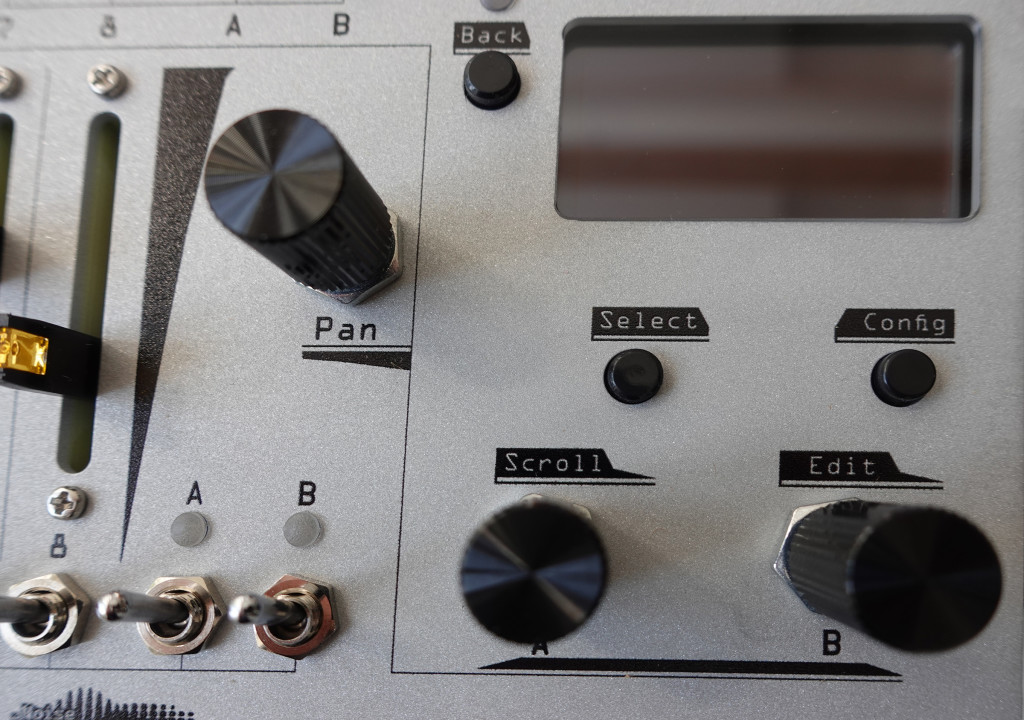
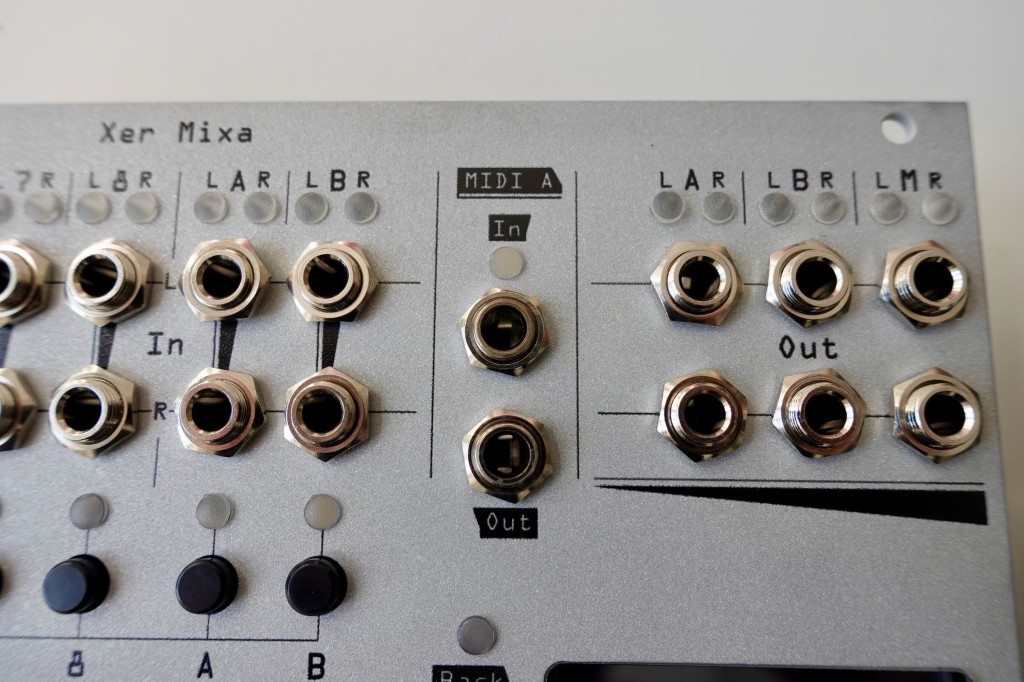
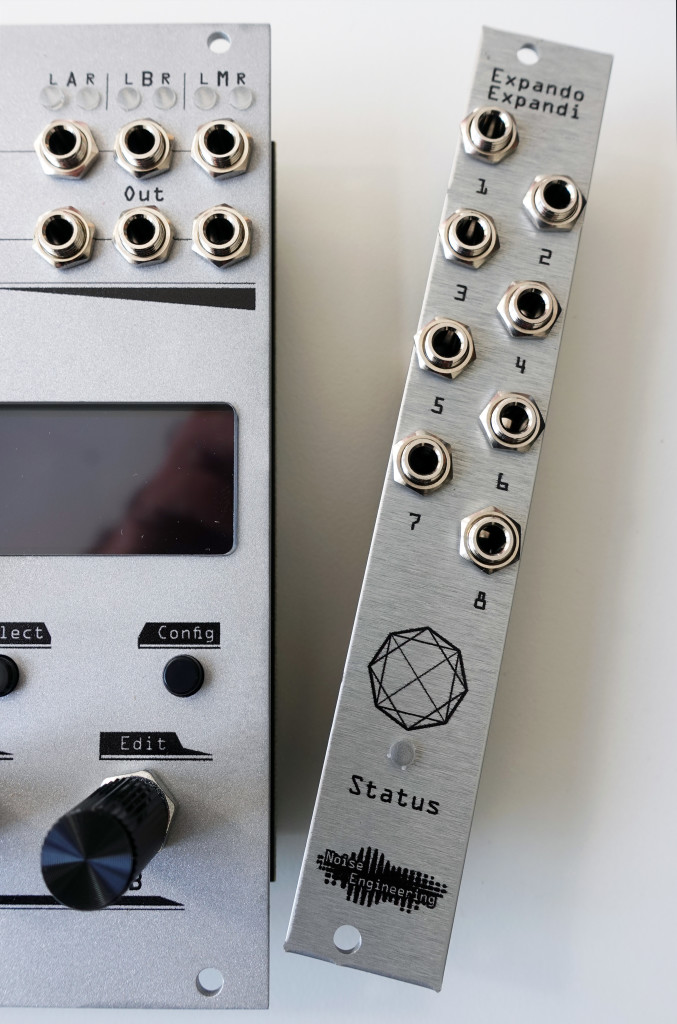
That actually only scratches the surface, as they’ve packed a bunch of options into the display and onboard software – see the documentation, which is already online. (Cough. Larger manufacturers. Little Eurorack makers do a better and faster job of documenting their stuff. Ahem.) But you have options like exactly what is on the display, how the LEDs are used, etc.
The Scenes look useful for live applications, too – quick recall of send levels, panning, and expander options without re-patching.
You can also use a channel as a VCA – with the Expander. That means this mixer can double as multi-VCA and mixer, depending on your needs.
They’ve also done nice stuff with headroom – the inputs will only clip around 22 V peak to peak.
There’s a black edition, too, natch:
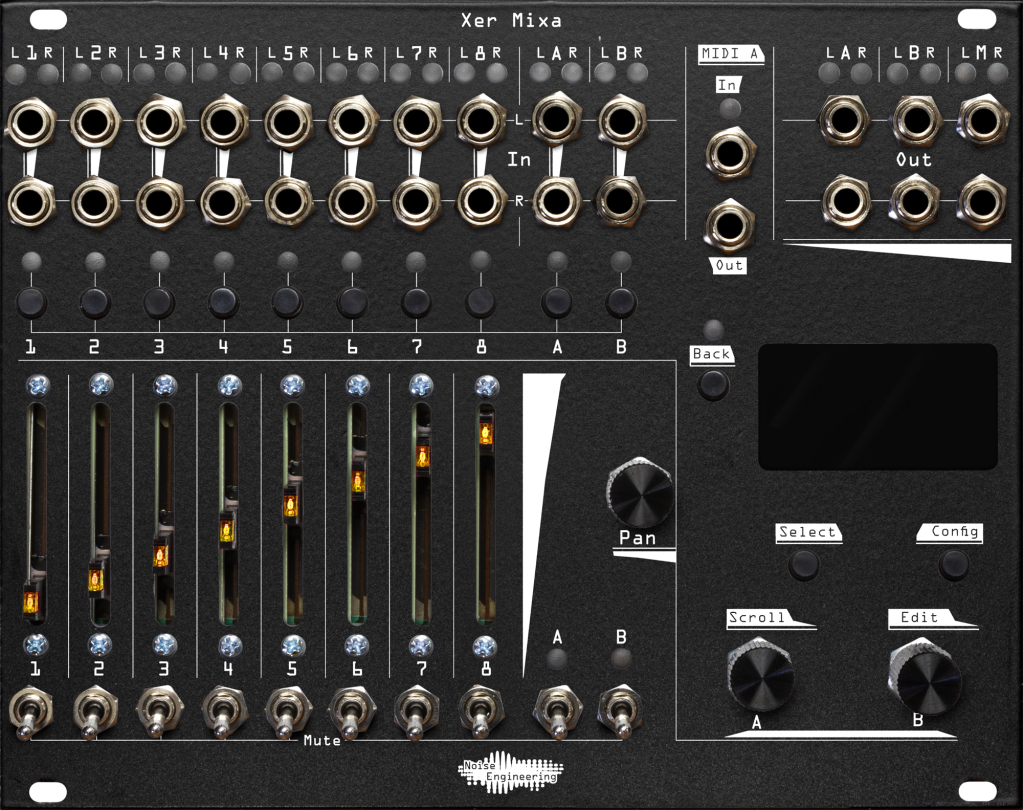
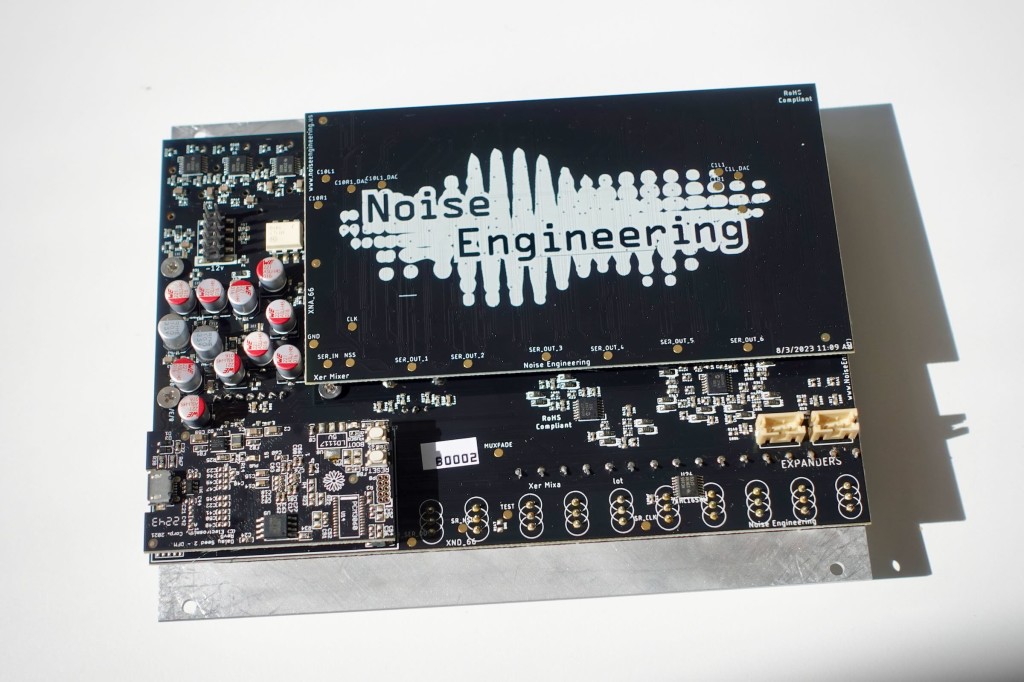
Pricing and details – and where to check this out in LA:
Noise Engineering will be on hand in Los Angeles at a release party at the synth library LADSR from 12-3 Pacific on September 2 and at Knobcon 2023 (September 9-10) for anyone interested in trying the new modules out.
Availability and pricing:
In stock in black and silver. Preorders open, shipping from Noise Engineering and retailers starting September 6, 2023;
Xer Mixa MSRP US$999
Expando Expandi MSRP US$169
Bundle (purchased together) MSRP US$1051
https://noiseengineering.us/products/xer-mixa-expando-expandi
Scroll down in the manual, by the way, for some colorful descriptions of how Kris and Stephen worked on this design –
Long-time NE fans may be aware of the lore here that Kris does the schematic capture and pcb design, and then generally doesn’t touch the module much until close to the end of development. For XM, moments before she ordered the production run, she had her moment. A head scratching moment led to her calling Stephen into her office, which led to some words we can’t use on a family-friendly blog. More power filtering would be needed.
Anyone who has ever done hardware design will find this relatable. This looks like a massive hit, though, and I’m running over know to bolt it into a rack and start playing.
But summer isn’t over yet. Oh, and summer blockbusters aren’t done yet. What do I mean? Do I know even what I mean? Well, you’ll just have to grab the popcorn and find out.
And watch for this review soon (for real), so ask any questions you’ve got.
PS, if this is too rich for your blood, I do really like the Xer Dualis – 4-channel stereo for about $225:
If you buy something from a CDM link, we may earn a commission.
Xer Dualis 4-Channel Stereo Mixer [Perfect Circuit]
Noise Engineering Xer Dualis 4-channel Stereo Mixer Eurorack Module – Silver [Sweetwater]
Noise Engineering Xer Dualis 4-channel Stereo Mixer Eurorack Module – Black [Sweetwater]